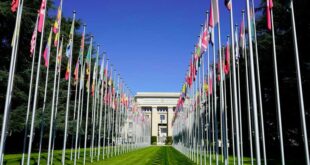Today’s Northeast Asia—or the NEA—apparently witnesses a co-existence of two international agenda. The two are closely interconnected; yet, each tends to follow its own logic and dynamics. We inherited the first agenda from last century. The second agenda reflects the realities of the current 21st century.
Of problems hindering the region in making steady progress, many are rooted in the past. These are the problems of a divided nation—or, alternatively, even two such nations if we include Taiwan, which is not far from the NEA. These problems have to do with the unresolved territorial disputes in which virtually each NEA nation is embroiled. These problems include non-proliferation concerns related to both nuclear and conventional weapons. These are problems of old ethnic stereotypes, biases and historical grievances that many regional countries still hold against their closest neighbors.
Conversely, the region has been incurring a spate of problems of a new kind. Suffice it to mention environmental issues and climate change, man-made and natural disasters, various aspects of cyber- and food security, concerns about terrorism and political extremism. These problems also include shortages of raw materials, unpredictable consequences arising from technological progress and the effects of globalization. Each year, these emerging challenges become increasingly evident, sometimes pushing the old familiar threats to the back of the public’s mind.
Could the NEA nations somehow leapfrog over the old agenda to concentrate on the new challenges? I believe they should not. We should not shift the burden of old problems onto the shoulders of new generations. If we follow this path, the remaining legacy of the Cold War will continue to poison politics in the region, eating away at our ability to effectively handle new challenges and threats. Strictly speaking, this is exactly what we stand to witness today in the NEA, and it puts a question mark over the region’s long-term security and development prospects.
Without joint and persistent efforts, the Cold War legacy will not disappear all by itself. One of the NEA’s defining features is that no particular event marked the end of the Cold War in this region, something like the fall of the Berlin Wall in Europe. Here, there have been no attempts to devise a collective security system, much as there have been no agreements on limitations of weapons, be they nuclear or conventional. For the NEA, the collapse of the Soviet Union never had the significance it had for Europe as it did not result in radical recalibrations of the regional balances and did not entail the unconditional victory of Western models of development. It would, therefore, be fair to say that the NEA entered the 21st century without quite bidding goodbye to the 20th.
Currently, the NEA nations are highly interdependent economically—significantly more so than the countries of Latin America or the Middle East. Nonetheless, economic interdependence is not automatically converted into regional political stability. Exceptional levels of regional trade and foreign direct investment co-exist with equally high military spending, with polls suggesting that nationalistic sentiments run equally high in most countries of the region. In some instances, asymmetric economic interdependence is turned into a means for exerting political pressure, while regional technological chains tend to become hostage to the geopolitical confrontation between the great powers.
Even such momentous events as the establishment of the Regional Comprehensive Economic Partnership (RCEP) in late 2020 has failed to have a particularly powerful effect on the geopolitical trends that dominate the NEA. Of course, one could always cite the destructive influence of out-of-the-region factors—in particular, hegemonic policies of the U.S.—but one cannot deny that there is significant crisis and potential for conflict within Northeast Asia as such.
What practical consequences does this observation hold for the region’s decision-makers, politicians and experts? It appears that we need to come together to think of the ways to align the priorities of national development envisioned by the regional nations. Most leaders in the NEA, much as most leaders globally, set themselves three strategic goals: namely, ensuring national security, accelerating economic growth and promoting human development. Most frequently, however, progress towards these three goals runs along parallel tracks. The three sections in national budgets rarely overlap, while three different government bodies and agencies are engaged in the three areas of work; even experts, as a rule, specialize in one of the three national strategies.
Yet, history teaches us that a national strategy being artificially split into three scarcely-connected components cannot yield positive results. Prioritizing security over economic growth can win a nation a war but would mean a loss in times of peace. By stressing economic growth at the expense of social justice, a nation can ultimately trigger social instability with pernicious political consequences. Focusing on the human dimension while neglecting national security, a nation can ultimately lose a significant chunk of its state sovereignty.
Northeast Asia demonstrates a large number of obvious imbalances in national priority rankings: Japan, for instance, has for many decades been living with a significantly restricted sovereignty, while North Korea, having focused on bolstering its security, has been experiencing grave economic problems. Alignment of national strategies is an extraordinarily difficult task, especially since the NEA nations stand at different levels of socioeconomic development, professing wildly different political systems. Nevertheless, this task has to be handled without waiting for the development levels of the region’s nations to level out. The NEA countries should probably scrutinize the experience of Southeast Asia, where the subsisting socioeconomic and political plurality, grave inter-country contradictions and conflicts did not hamper successful integration under the banners of ASEAN.
As a matter of fact, a certain degree of fragmentation and disunity are present in the very dynamic and extensive Russia–China cooperation in the NEA. So far, our interactions have often fanned out into a set of highly important yet independent projects that are not always closely interconnected. Individual projects are implemented in the military-technical area, energy, transport, cross-border partnership, etc. Priorities for cooperation are sometimes selected on the basis of the ability of individual government agencies, big business groups and leaders of border regions in both states to promote their interests at the top level of political leadership. In some cases, these projects compete with one another instead of being mutually complementary.
With the political will and interest of both parties obviously present, it is still very hard to achieve a bilateral balance of priorities for cooperation while such balance is even harder to achieve in a multilateral format given a lack of trust and of significant experience in joint projects. As for selecting the right tools for ensuring security and promoting regional cooperation, we should proceed from the premise that the region appears to have no ideal military, political or economic umbrella mechanisms for resolving all security and development problems.
We often have to hear that the NEA has a pronounced deficit of institutions, which is particularly noticeable in comparison with Europe. Indeed, the contrast between the two regions in their respective saturation with multilateral mechanisms is rather evident. Yet, recent history has demonstrated that many European multilateral institutions and organizations have failed to prevent a new spiral of confrontation between the East and the West. Today, Europe and the NEA—like the rest of the world—has been increasingly exhausted from institutional fatigue, while national governments are unwilling to make large investments in establishing new internationally-operating cumbersome bureaucracies.
This being so, the solution to security and development tasks in the region should come from the top down as well as and as much as from the bottom up. The regional states thus need to hone their skills in establishing tactical coalitions to focus on individual problems. Coalitions should be based not so much on common values as on common interests. They can involve not only specific NEA nations but also non-state actors, such as big corporations, leading universities, civil society institutions, etc. These coalitions could focus on a variety of issues, from building trust and reducing military risks to joint transition to new energy. Apparently, non-regional actors could also participate in such coalitions in some of the cases.
In general, Russia and China are facing the task of mastering the skills to enable productive collaboration within complex multilateral structures, each having its own membership of different-level actors. This task is far from easy, especially so since both China and Russia have historically sparse experience of working within full-fledged multilateral structures. Imperial traditions are still strong in both Moscow and Beijing, favoring asymmetrical bilateral formats over those multilateral in nature. Theoretically, however, this task appears quite feasible both for Russian and for Chinese diplomacies as both countries have already accumulated some positive experience of working in multilateral regimes.
In conclusion, a few words to be said on the future role of Russia and China in Northeast Asia. It appears our two states have every reason to stake a claim to regional leadership, in no way infringing upon the interests of third states.
Russia and China are, first and foremost, large states with significant military and other resources that other regional actors are lacking. This is particularly important for implementing long-term and capital-intensive public-private partnership projects. Moscow and Beijing have significant flexibility in their foreign policy as they are not part of rigid bilateral or multilateral military-political alliances. Russia and China have experience in implementing large-scale public-private partnerships, including international ones. Besides, Russia and China share an objective interest in restructuring the current system of relations in the NEA as it no longer fits the region’s political and economic realities.
The region’s current needs require Russia and China to co-operate in a more systemic fashion, being more open to flexible multilateral formats. If the task is to gradually establish an integral security and development ecosystem in the NEA, this can only be achieved by pooling the efforts of all regional states. The trilateral “China – Russia – South Korea” or the quadrilateral “China – Russia – South Korea – Japan” formats seem to be highly promising. Although multilateral formats are far more complex than bilateral ones, they allow for a common synergy to be created that is hardly achievable at the bilateral level.
In any case, the task of tying security and development priorities in NEA requires innovative approaches on the part of regional decision-makers and experts. International cooperation between interdisciplinary analytical centers could become an important catalyst to developing and promoting such approaches.
 Geostrategic Media Political Commentary, Analysis, Security, Defense
Geostrategic Media Political Commentary, Analysis, Security, Defense





